
Ways To Give
By making a gift now, you can join thousands of other Carter Center donors who believe that every human being should enjoy life free from violence and disease. Your partnership will help prevent and resolve conflicts, enhance freedom and democracy, and improve health — using proven methods with measurable results.

Problem: Access to clean, safe drinking water

https://libapps.s3.amazonaws.com/accounts/301762/images/glass_of_dirty_water.jpg

https://www.hackensackmeridianhealth.org/wp-content/uploads/2020/10/iStock-1204637747-scaled.jpg
Faucets turn on. Water comes out. Drinking glasses are filled. Thirsts are quenched. For most of us this is done without thought as to where the water came from and if it is safe to drink. But for many, especially in underdeveloped countries, this is not the case. According to World Health Organization (WHO), at least 2 billion people around the world are using water sources for drinking that are contaminated with feces. And that water is transmitting diseases such as cholera, dysentery, typhoid, and polio. An estimated 485,000 deaths a year are contributed to diarrhea from drinking contaminated drinking water sources.
In underdeveloped countries, approximately 21-22% of health care facilities have no water, sanitation, or waste management services. Think about it, those are the places that are supposed to help people stay healthy but yet, are not able to provide the basic services to do so.
According to WHO, 50-100 liters of water per person, per day, are needed to make sure that basic needs are met and reduce the risk of health concerns. But people who are considered lacking access to clean water only use about 5 liters per day; a tenth of the average amount of water used just to flush toilets in rich countries. 2 liters of safe water are needed daily for food preparations and 7.5 liters are needs for lactating women engaged in only moderate physical activity.
Diarrhea is the most known disease when it comes to contaminated food and water. A large number of people die each year from it but for the most part, it is preventable. Simply washing your hands lowers your risk of disease but in areas where water isn’t available, handwashing doesn’t take priority.
Along with diarrhea, other risks from contaminated water are infection from parasites. In 2017, over 220 million people needed treatment for schistosomiasis which is caused by parasitic worms from infested water. Schistosomiasis is also known as “snail fever” and is a waterborne parasitic infection that damages internal organs. It is contracted when a person has contact with contaminated water, usually through activities such as bathing, washing laundry and fetching water. It most commonly affects children when doing chores or playing in fresh water.
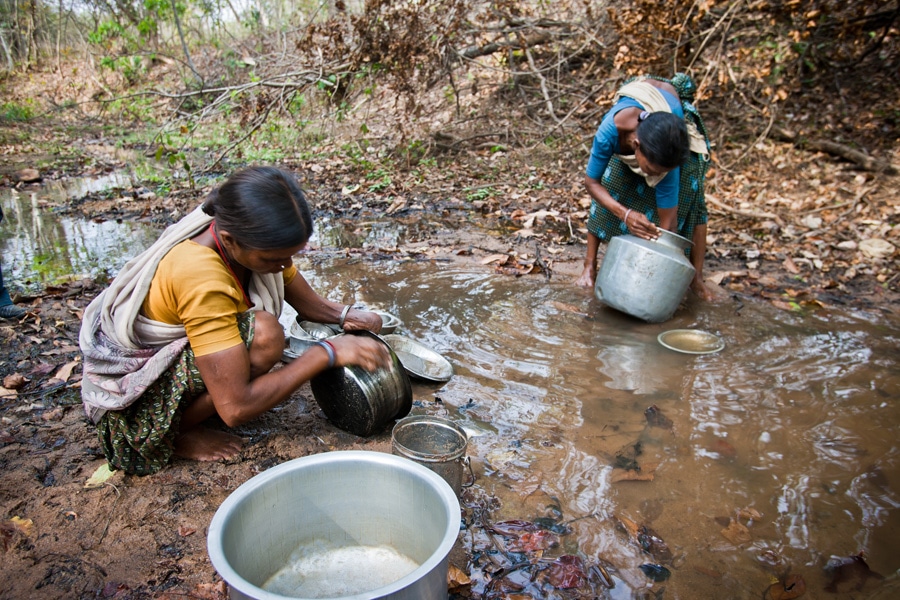
https://www.ob.org/wp-content/uploads/2012/06/gangaya32.jpg
Schistosomiasis is one of the most devastating parasitic diseases in tropical countries with Nigeria the most affected. Those infected can have anemia, stunted growth and developmental delays with chronic debility and premature death.
The Carter Center, founded by Jimmy and Rosalyn Carter, is committed to human rights and alleviating human suffering. It seeks to prevent and improve health, among other things. Some of those ways is assisting the Nigeria Ministry of Health in providing education and medication needed to treat schistosomiasis. The World Health Organization and many other partners have many it possible to deliver the medication provided by The Carter Center.
With the help of The Carter Center, blood in schoolchildren’s urine, a sign of schistosomiasis infection, has been reduced by up to 50% in some areas of Nigeria.

https://www.cartercenter.org/resources/gallery/images/10.jpg
Another goal of The Carter Center is the eradication of Guinea worm disease and are working closely with ministries of health and local communities, the U.S. Center for Disease Control and Prevention, the World Health Organization, UNICEF, along with many others.
After smallpox, Guinea worm disease could become the second human disease in history to be eradicated. It would be the first parasitic disease to be eradicated and the first disease to be eradicated without a vaccine or medicine.
Guinea worm disease by caused by a parasitic nematode that is contracted when people drink water that is contaminated with Guinea worm larvae. Inside a human’s abdomen, the worm’s mate, mature and grow. The male dies but the female migrates to the skin where lesions are caused when the worm emerges from the body.
This infection can incapacitate people for long periods of time and render them unable to care for themselves, work or attend school.

https://www.cartercenter.org/resources/gallery/images/15.jpg
In 1986, Guinea worm disease affected nearly 3.5 million people a year in 21 countries. That’s when LifeStraw partnered with The Carter Center to design a simple mesh filter that was able to remove Guinea worm larvae and 99.9999% of waterborne protozoan parasites. As of 2020, infections have been reduced more than 99.99 percent and there were only 27 cases.
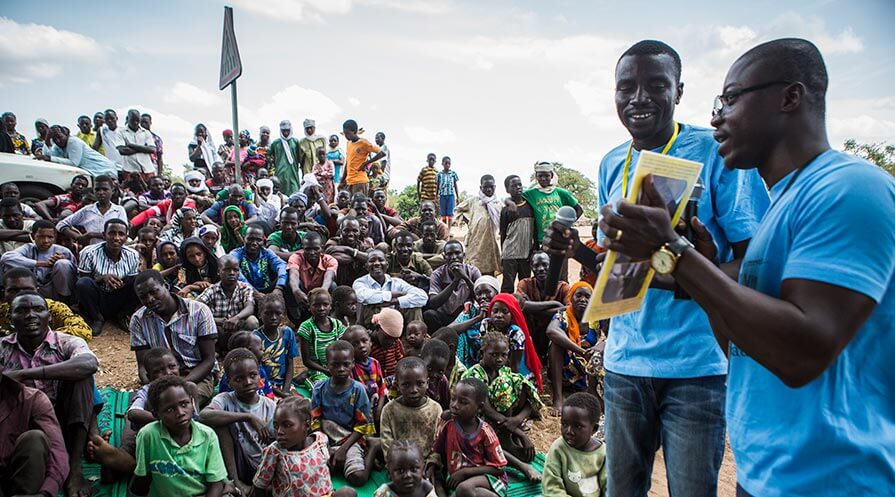 https://www.cartercenter.org/resources/images/headers2010/contentheaders/healthprograms/chad-gw-education-landing-page.jpg
https://www.cartercenter.org/resources/images/headers2010/contentheaders/healthprograms/chad-gw-education-landing-page.jpg
If water sources can be improved and made more accessible, people can spend less time trying to collect it and more time on other ways of being productive. There would also be an increase in personal safety when long and risky journeys don’t need to be made for water. Economically, better water leads to lower health costs and when less people are sick, this can bring an increase to being economically productive. Children would spend less time being sick and more time in school with positive long-term benefits for their future.

https://i.pinimg.com/originals/5f/23/fd/5f23fd49118a9b0057c6d2b971d04023.jpg
Options for safe drinking water and irrigation are continually evolving. Management of all water resources such as groundwater, wastewater and harvested rainwater will need to be improved to ensure availability and quality.
WHO is the international authority on public health and water quality and leads efforts to prevent transmission of waterborne disease by advising governments on developing health-based targets and regulations.
Of course, clean water and sanitation facilities and services won’t matter much if people can’t afford them. The UN and WHO state these services must be available and affordable for everyone and that the cost for both shouldn’t exceed 5% of a household’s income. That would allow people to still acquire other essential goods and services such as food, housing, education, and health services. Unfortunately, almost 2 out of 3 people who are not able to get clean water live on less than $2 per day, with 1 in 3 living on less than $1 a day. In some areas, such as Jakarta, Manila, and Nairobi, people who live in poverty pay 5 to 10 times more for water than those living in high-income areas of the same cities.
To solve the problem of access to safe water, things like membrane technologies are preferred and more feasible than a more centralized solution. Ultrafiltration is also another avenue being studies to make water safe for drinking from bacteria, however, some viruses and bacteria are able to permeate an ultrafiltration membrane.
SoDis or solar disinfection is a low-cost disinfection that is effective by inactivating pathogens using UV and the sun to increase the water temperature in a glass bottle. Research showed that Vibrio cholerae became inactivated once the water temperature rose above 40 degrees C and E. coli was reduced in temperatures above 45 degrees C. SoDis is a proven simple, low-cost way to disinfect water, however, it is heavily dependent on weather conditions and is not able to remove chemical pollutants in the water.
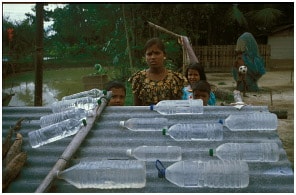
https://www.cdc.gov/safewater/images/solardisinfection-2.jpg
While no one will argue that people shouldn’t have clean water, there are some concerns about donations and humanitarian efforts being unsustainable when the money runs out and programs come to an end. An article by John Hawthorne in Business Connect points out 5 reasons why donations to the poor may be a bad thing.
Donating is a good thing and shouldn’t be discounted but sometimes people fail to realize that donating to the poor can create a vicious cycle. Research is showing that donations, if not thought out, have consequences that can end up hurting more than it helps.
1. The communities can’t sustain the things donated to them. How will poor communities be able to support and maintain the created resources? Things like a drilled well will work for a while but what happens when it eventually breaks down? Where will the parts to fix it come from? Who will fix it? Where will the money come from to fix it? But just because there are questions doesn’t mean that nothing should be done. It just means that when getting involved, there are things that need to be taken into account like time, education, partnership and accountability.
2. It’s misguided and doesn’t solve the problem. Often donations come in without considering if they can solve the problem. Take water disinfectants. They get donated and people feel good that they are helping to fix the problem. But it doesn’t fix the problem because it’s not known if they actually cause a real, lasting change.
When donating think about is it what they need? Will it solve the biggest problems they have?
3. The solutions aren’t fully developed. Tech companies try to help underdeveloped countries by giving them tables thinking it will solve their problems and bring them up out of poverty. It seems like a worthwhile effort, but it fails most of the time because they haven’t completely developed solutions along with local businesses and government. If infrastructures aren’t in place, it may turn out to be a band-aid but not a cure.
4. Donors don’t have a sustainable plan. Often donors want to help but don’t have a definitive plan as to how to sustain what they have implemented. Support structures aren’t typically thought of whether its policies put in place by the government, mentoring or even adequate financial support. It's like that old saying “Give a man a fish and he will eat for a day. Teach him to fish and he will eat forever”. You can away pallets of bottled water but what happens when those are gone? Bottled water is fine to get things started but there needs to be plans in place to continue getting drinking water, preferable local resources that can be cleaned and made safe to use.
5. It kills local economies. What many people don’t realize is that giving can actually kill a local business. Response efforts need to be careful and not hurt local businesses. It makes more sense to help develop local business to meet the needs of people, to create jobs ad buy local.
Self-sustaining business solutions have a longer impact in helping the poor than just giving away products. Donations received go through a local entrepreneur, and they then get a commission from the sale. The entrepreneur is now there for the lifespan of the product to help support it for maintenance and parts.
When entrepreneurs are empowered, an entire economy is lifted, and local businesses are built up where life-improving products can be bought.
Water safety is a must for all people, in every county. The inability to have sufficient access to clean drinking water impact not only individual people, but also, economies, business, health, education, and government. In areas where water supplies have been contaminated, programs need to be put in place to educate the need for and the proper way of person hygiene. They need to not only know the how but also the why, along with the understanding of the improvements the future will bring.
The Solution:
So, what can you do to help? Contact businesses that deal with sanitation and water management and ask them to set aside a portion of revenue for research in how to build, install, and maintain functioning and sustainable filtration systems for drinking water and waste products, in a cost-effective way, for developing countries.
Write to your local colleges and universities to incorporate this into programs such as engineering and chemistry to help developing countries to find ways to have clean water. Quick and easy ways to support these efforts are by donating to different programs or buying products whose proceeds help support the programs. Lifestraw is a good example. For every product purchased, they donate one to a child that will give them safe, clean water for a year. Get involved and volunteer. That doesn't always mean you have to travel to other countries and dig a well. Different programs need help here to have events and fundraisers so that there is money to fund the programs. Clicking on the links provided help show why it is so important to make sure that people everywhere have the same ability to have safe water that we take for granted.

Give Generously to Sustainable Water and Sanitation Organizations
Donate for Water, Help Families in Africa and Asia - Lifewater International
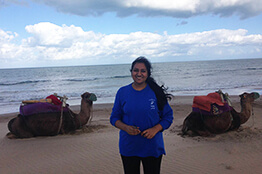

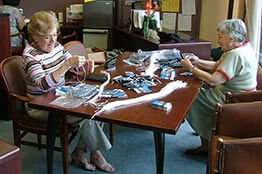
Volunteer at The Carter Center

Join us at The Carter Center or watch a free, live webcast.
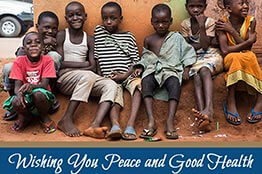
Share your support with family and friends.

Interactive displays feature the work of The Carter Center.
At LifeStraw, we believe that everyone should have equitable access to safe drinking water, and that our goals of providing safe drinking water cannot be accomplished without also ensuring positive impact on people and planet across our business. Learn more below about our Responsibility Initiatives, from Giving Back to Responsible Supply Chain
For every product purchased, a child in need receives safe water for an entire year. This unique program is fully operated by LifeStraw through local staff and partners.
LifeStraw is active in supporting access to safe water across the globe from it’s over 25 years of partnership with the Carter Center for Guinea worm eradication, to annual disaster and emergency response work, to supporting local partners in the US and across the globe with providing access to safe water
References:
World Health Organization, June 14, 2019, Drinking-water, www.who.int/news-room/fact-sheets/detail/drinking-water
The Carter Center, 2021, Guinea Worm Disease, www.cartercenter.org/health/guinea_worm
The Carter Center, Schistosomiasis, 2021, www.cartercenter.org/health/schistosomiasis
CNET, The LifeStraw explained: How it filters water and eradicates disease, April 9, 2020,
Hawthorne, John, June 7, 2017, 5 Reasons Why Donations To The Poor May Bring Bad Results,
Business Connect, businessconnectworld.com
The Human Right to Water and Sanitation, UN-Water Decade Programme on Advocacy and
Communication and Water Supply and Sanitation Collaborative Council, www.un.org/waterforlifedecade/pdf/human_right_to_water_and_sanitation_media_brief.pdf
Lifestraw, 2021, Doing Good, Doing Good | LifeStraw Water Filters & Purifiers
Lifewater International, 2021, lifewater.org
